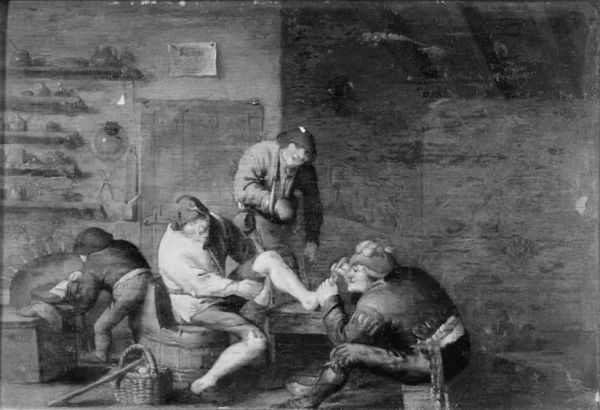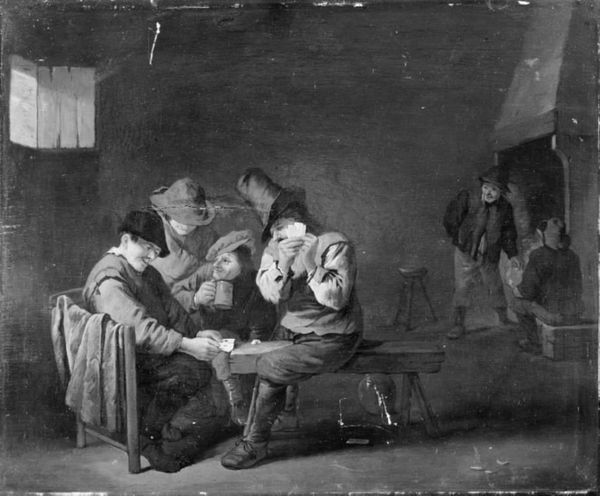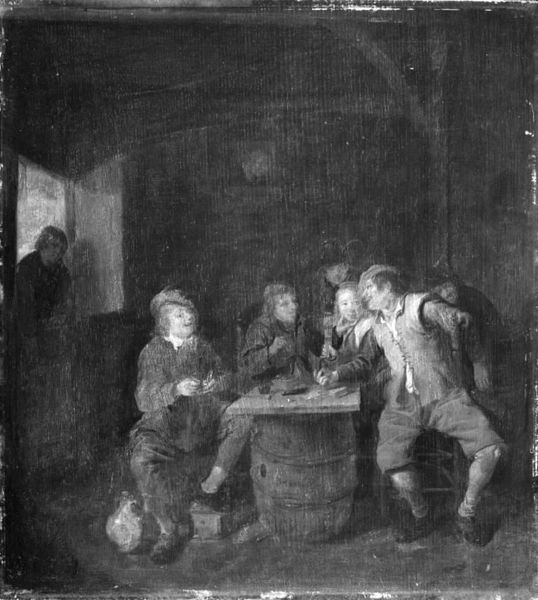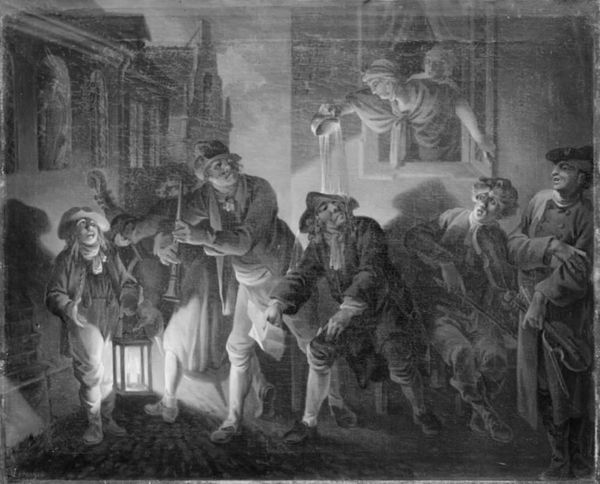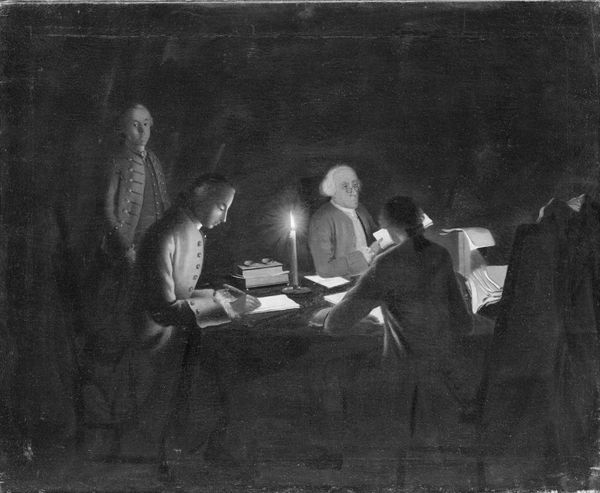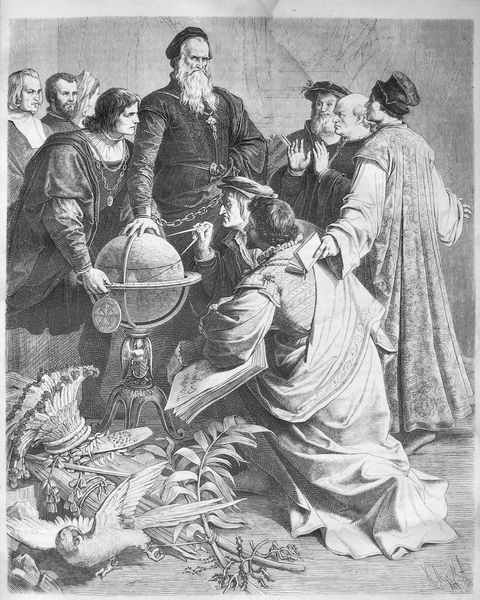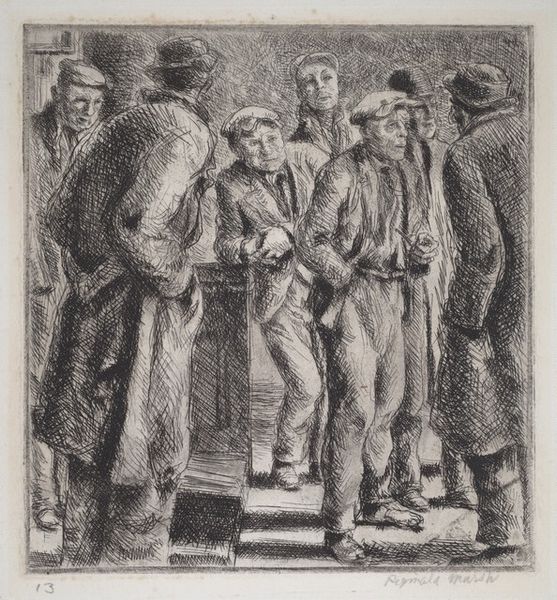
Fra Ludvig Holbergs "Erasmus Montanus", III akt, 3. scene 1825 - 1873
0:00
0:00
painting, oil-paint
#
portrait
#
painting
#
oil-paint
#
black and white format
#
figuration
#
group-portraits
#
romanticism
#
black and white
#
genre-painting
#
history-painting
Dimensions: 23 cm (height) x 30.5 cm (width) (Netto)
Editor: So, this is Wilhelm Marstrand's "Fra Ludvig Holbergs 'Erasmus Montanus', III akt, 3. scene," painted sometime between 1825 and 1873 using oil paint. It depicts a chaotic, indoor scene…almost like a snapshot of a play unfolding. There’s definitely a lot going on here, so I'm wondering, as a historian, what do you see in this piece? Curator: It’s intriguing, isn’t it? Immediately, I'm drawn to consider how this image functions within a larger cultural conversation. Marstrand, creating this 'history painting', isn’t simply illustrating a moment from Holberg's play. Instead, it highlights how theatre—and specifically, national plays—were crucial in forming Danish cultural identity. Have you thought about that? Editor: A little. I guessed that it was related to theatre since the title alludes to a stage scene. How do you see this theatricality playing out in the artwork itself? Curator: Look at the composition. It’s not about perfect realism. The theatrical setting is almost self-conscious. It shows not only the performance but also the *act* of observing a performance. You have the figures on the periphery, watching, judging. Editor: It almost seems like he is encouraging the viewers to see the characters critically... Curator: Precisely! What might that say about Marstrand's view of academic pretense versus societal values? By rendering the scene this way, Marstrand prompts a dialogue. He positions art as a tool for examining national character and values during a period of significant social change. Editor: That’s a totally different way to look at a genre painting than I initially considered! It’s not just documenting a funny scene; it's contributing to a much larger cultural discussion. Curator: Indeed! And understanding the politics of imagery within a historical context makes the work so much richer.
Comments
No comments
Be the first to comment and join the conversation on the ultimate creative platform.
